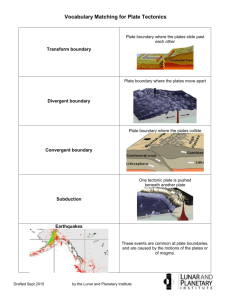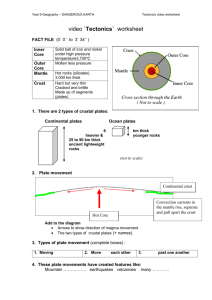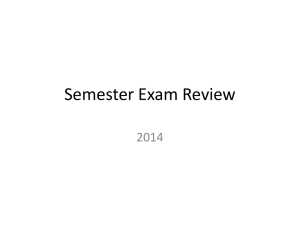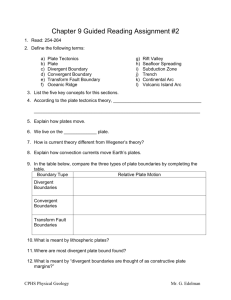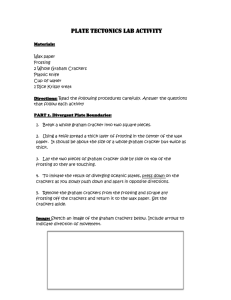Snack Tectonics
advertisement
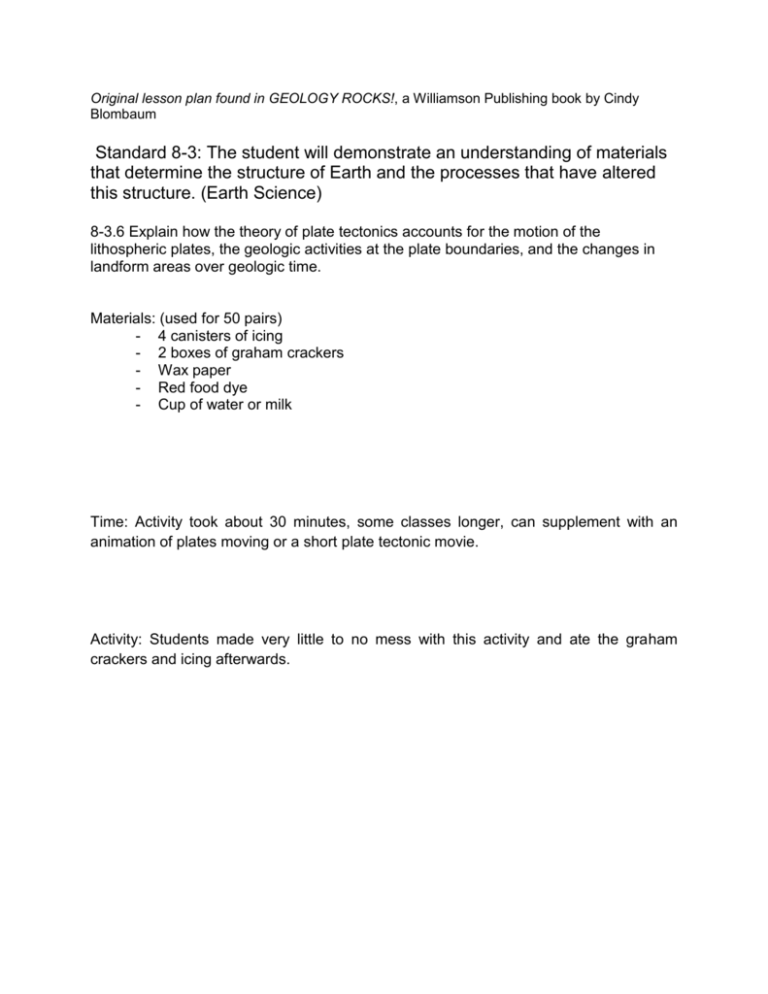
Original lesson plan found in GEOLOGY ROCKS!, a Williamson Publishing book by Cindy Blombaum Standard 8-3: The student will demonstrate an understanding of materials that determine the structure of Earth and the processes that have altered this structure. (Earth Science) 8-3.6 Explain how the theory of plate tectonics accounts for the motion of the lithospheric plates, the geologic activities at the plate boundaries, and the changes in landform areas over geologic time. Materials: (used for 50 pairs) - 4 canisters of icing - 2 boxes of graham crackers - Wax paper - Red food dye - Cup of water or milk Time: Activity took about 30 minutes, some classes longer, can supplement with an animation of plates moving or a short plate tectonic movie. Activity: Students made very little to no mess with this activity and ate the graham crackers and icing afterwards. Use graham crackers and frosting to learn about the different aspects of plate tectonics. Manipulate the graham crackers in various ways to model Divergent plate boundary, Convergent plate boundary and Transform plate boundary. Make observations what happens to the graham crackers and frosting and discuss your findings. Put two graham crackers side by side, and slide one up away from you and the other one down toward you. When plates move past each other like this, things don't exactly go smoothly. In fact, the plates usually get stuck on each other and then give a lurch and move on, sending waves of vibrations through the earth's interior (much like the circular waves that ripple out when you drop a pebble in the water). These vibrations are so powerful that we have a special name for them— earthquake! Record your observations of the movements of the plate. What type of plate boundary is this? Put two graham crackers very close to each other on the wax paper and slowly push them apart. You've made a rift, or big crack in the ocean floor. As the plates separate, magma oozes up from below and makes new ocean floor or creates underwater mountain ranges. Record your observations of the movements of the plate. What type of plate boundary is this? Push two crackers toward each other; make one slide underneath the other. When this happens on earth, watch out! The bottom plate starts to melt from the intense heat and pressure. It becomes new magma that floats up between two plates, building up and up over many years until it finally causes a volcano blast! That plate action caused Mt. St. Helens in Washington State to blow its top! Record your observations of the movements of the plate. What type of plate boundary is this? Put two graham crackers side by side on the wax paper (wet the edge of one graham cracker in milk first), and slowly push them together. The ridge of pushed -up cracker is just like many mountain ranges around the earth that were formed as two plates slowly crumbled together over millions of years. The Himalayas ( the mountain range that includes Mount Everest) were formed when India crashed into Asia. Record your observations of the movements of the plate. What type of plate boundary is this? Analysis: What kind of plate boundry allows new crust to form by magma pushing up between separating plates? What kind of plate boundary has a subduction zone, where some crust is destroyed? What kind of boundary neither destroys nor creates crust?


